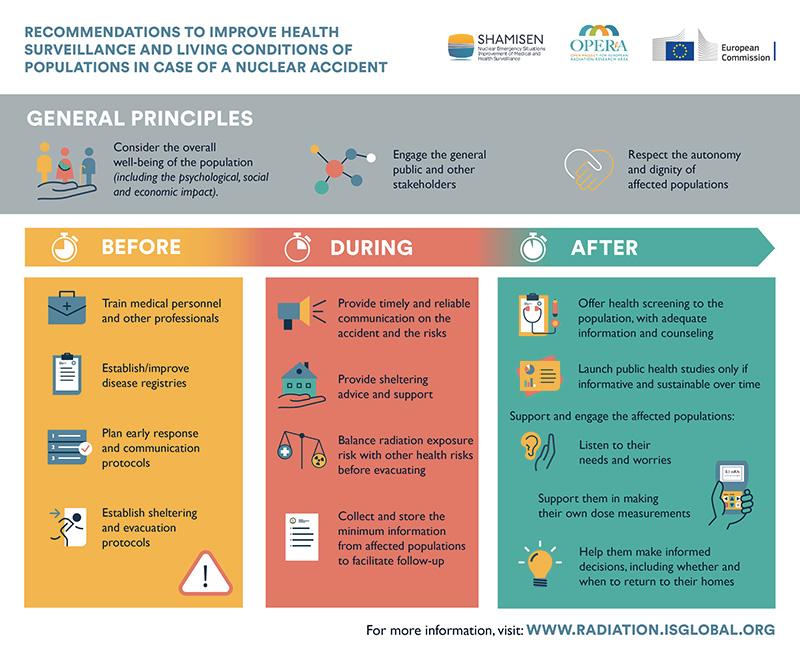28 recommendations to limit the consequences of nuclear accidents on the population
The guidelines presented at the final meeting of the European Shamisen project underlines the importance of involving population in the management of an accident and taking into account the economic and social upheavals and the psychological effects, particularly in the context of an emergency evacuation.
Download the report Recommendations and procedures for preparedness and health surveillance of populations affected by a radiation accident (PDF, 338 Ko)
What to do or not to do in case of a nuclear accident? How to improve the health surveillance and living conditions of affected population? Because the decisions taken at the time of the Chernobyl and Fukushima accidents sometimes "did more harm than good", the European Commission funded the Shamisen project, a research program that brought together 19 European and Japanese organizations including IRSN, as well as American, Belarusian, Russian and Ukrainian experts.
Resarchers agreed to set 28 recommendations to improve the emergency and preparedness to a nuclear accident, the early and intermediate phase and the long-term recovery phase. General principles that can be applied to other types of accidents and disaster have also been identified.

The guidelines aim to extend the management of the nuclear accident beyond the protection of population from exposure to ionizing radiation alone. Measures such as the emergency evacuation have important psychosocial that must be taken into account.
To summarize, the recommendations focus on three main objectives (see infographics above to involve affected populations in the decision making process alongside experts and authorities:
- Take into account the well-being of the affected populations;
- Foster participation of affected population and other stakeholders such as medical staff;
- Respect the autonomy and dignity of the affected populations.
All major aspects on nuclear accident management are concerned: evacuation of populations, measurement and dose assessment, health surveillance, epidemiological studies and communication.
For example, local facilitators should make the link between the experts and the affected populations to allow everyone to make a choice based on reliable, timely and up-to-date information. Population should also be encouraged to participate freely in epidemiological studies in order to improve their relevance, efficiency and acceptability. However, it is important to ensure that these studies are informative and sustainable over time the findings are communicated in a clear understandable language to all concerned.
Some of the recommendations of the Shamisen project have already been implemented in France and are included in the French National Plan for Response to a Major Nuclear or Radiological Accident published in February 2014.
